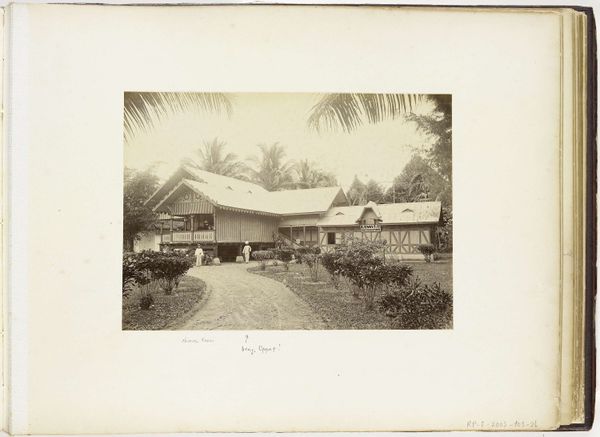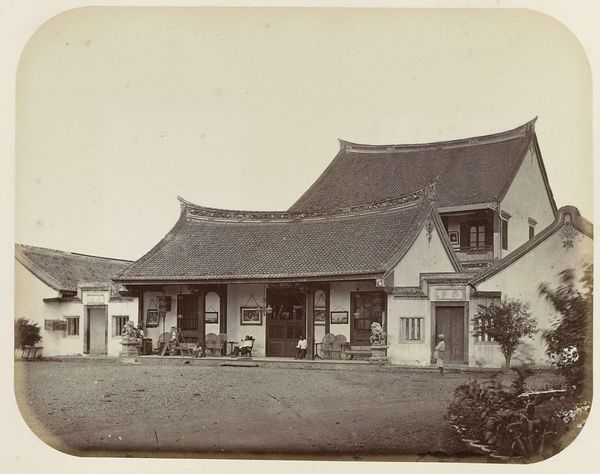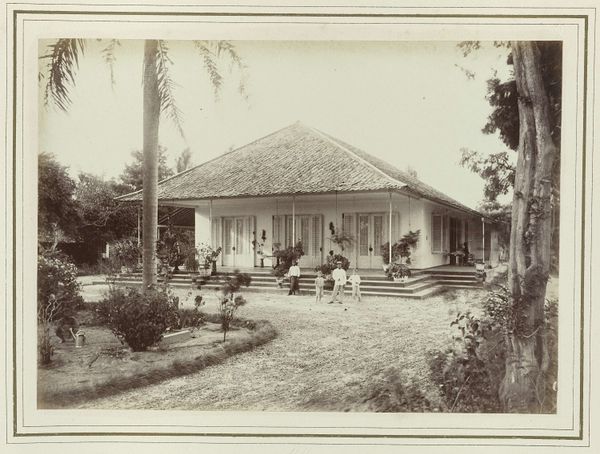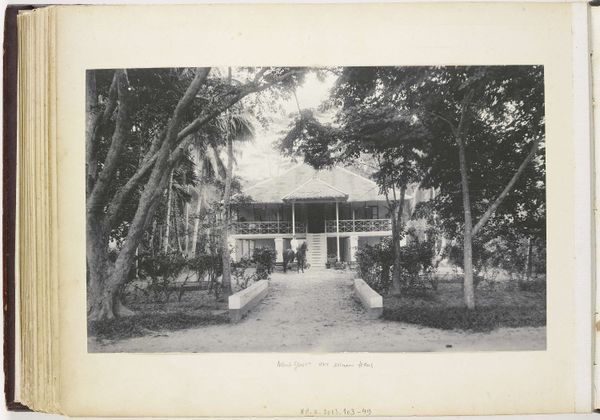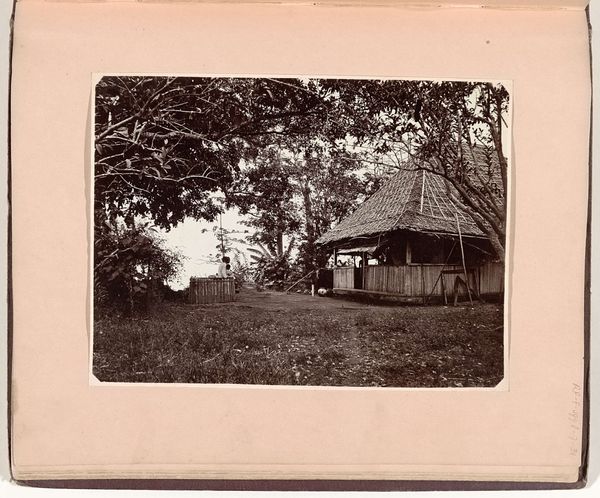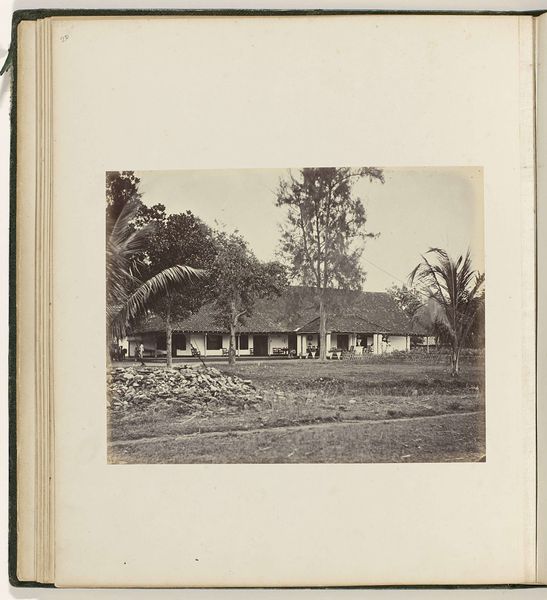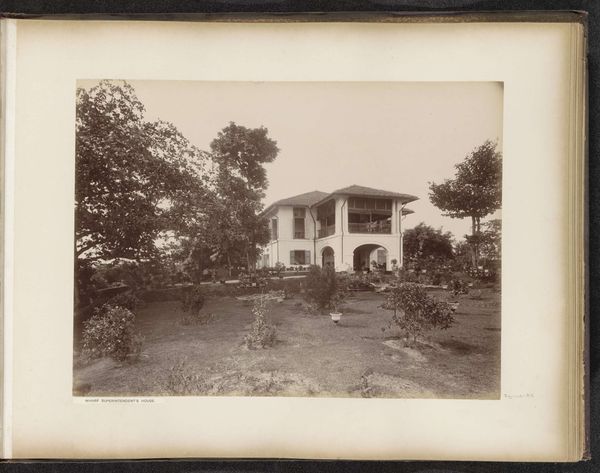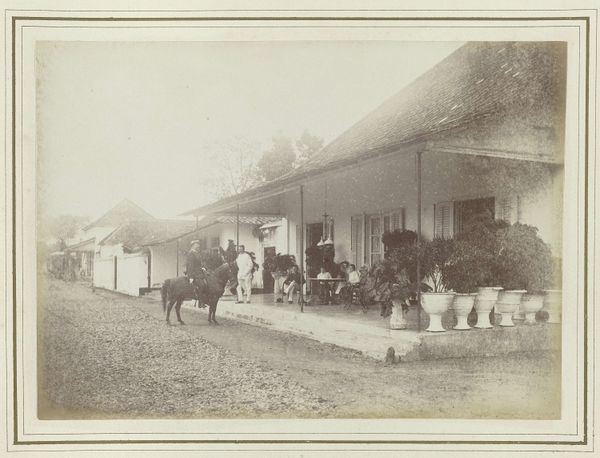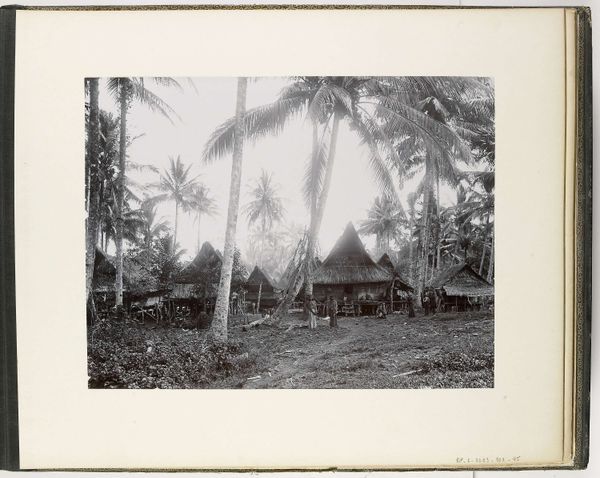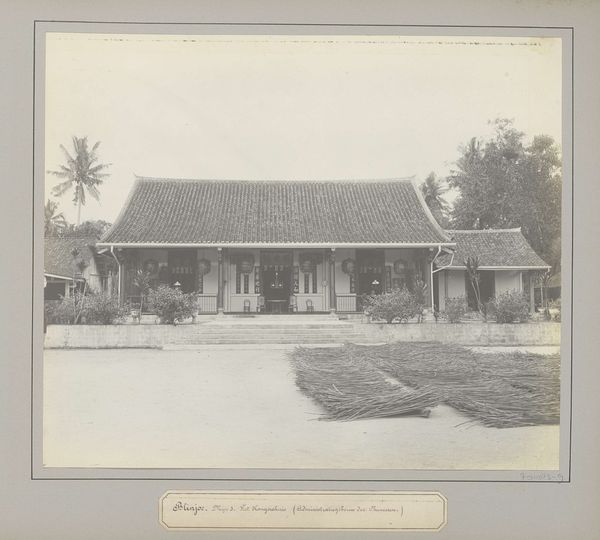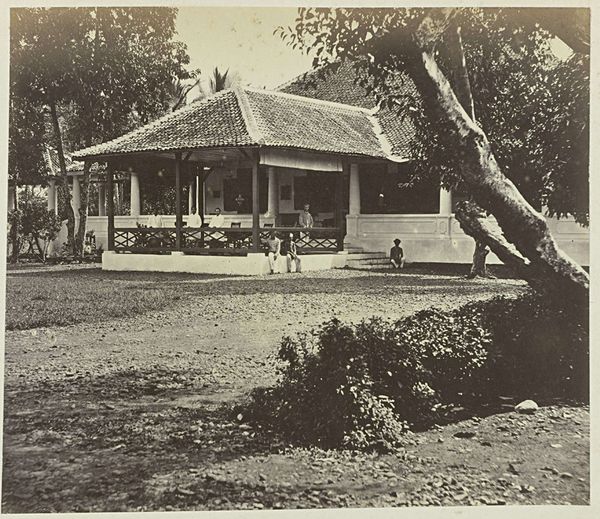
Portret van de fotograaf H. Ernst voor zijn huis, Langkat Sumatra c. 1890 - 1900
0:00
0:00
heinrichernstco
Rijksmuseum
photography, albumen-print
#
landscape
#
photography
#
orientalism
#
albumen-print
Dimensions: height 144 mm, width 204 mm
Copyright: Rijks Museum: Open Domain
Curator: What a find! Today we are looking at an albumen print, dating back to around 1890 to 1900, titled "Portret van de fotograaf H. Ernst voor zijn huis, Langkat Sumatra." It's part of the Rijksmuseum collection. The image is credited to Heinrich Ernst & Co. Editor: It evokes a feeling of serene colonial life, the carefully arranged garden contrasting sharply with the surrounding tropical wildness. The figures seem posed, almost staged, reinforcing that composed tranquility. Curator: Absolutely. The choice of the albumen print is very interesting here, giving the scene a sort of romantic cast and subtle sepia tones. Consider that albumen was produced using egg whites, giving the print not only a distinctive tonal range but a physical body through that organic binder. The material processes were really laborious. Editor: Looking closer, there’s a visual narrative unfolding through its composition. The symmetrical framing of the building, flanked by curated shrubbery, draws the eye directly towards the inhabitants posed on the porch. The architecture, in contrast to the natural background, looks carefully placed in this environment. It symbolizes a crafted identity – an outpost claiming space. Curator: I agree; and I want to emphasize the context for these images: Sumatra became part of the Dutch East Indies through colonial expansion. Photography in this area by someone named Ernst brings up complex questions about documenting land and its occupants, creating imagery bound up with economics and imperialism. It's a representation viewed through that distinct colonial lens. Editor: Right, we should reflect on the fan palm. Fan palms carry such symbolic weight in this context— they represent the exotic allure that Southeast Asia had in the European imagination at the time. That combined with the house suggests something that straddles leisure and power in its era. Curator: This discussion highlights photography's capacity to convey both historical narratives and material reality. Understanding production means allows us a window to interpret an era and evaluate who holds the authority behind its story. Editor: Thinking about Ernst as a photographer also tells the story of representation that carries significant psychological and historical reverberations, and through images such as these, that resonance has outlasted the albumen print itself.
Comments
No comments
Be the first to comment and join the conversation on the ultimate creative platform.
